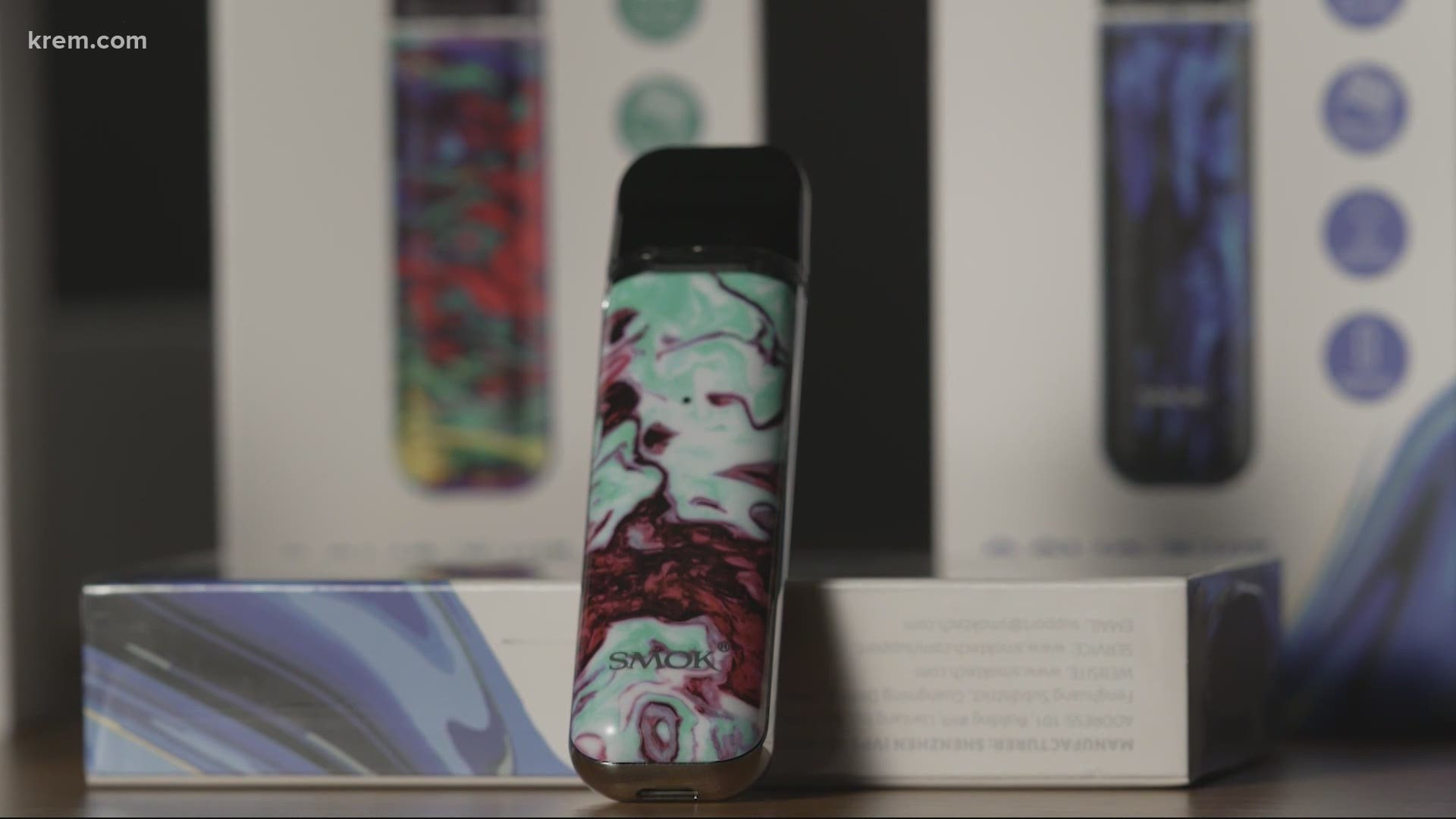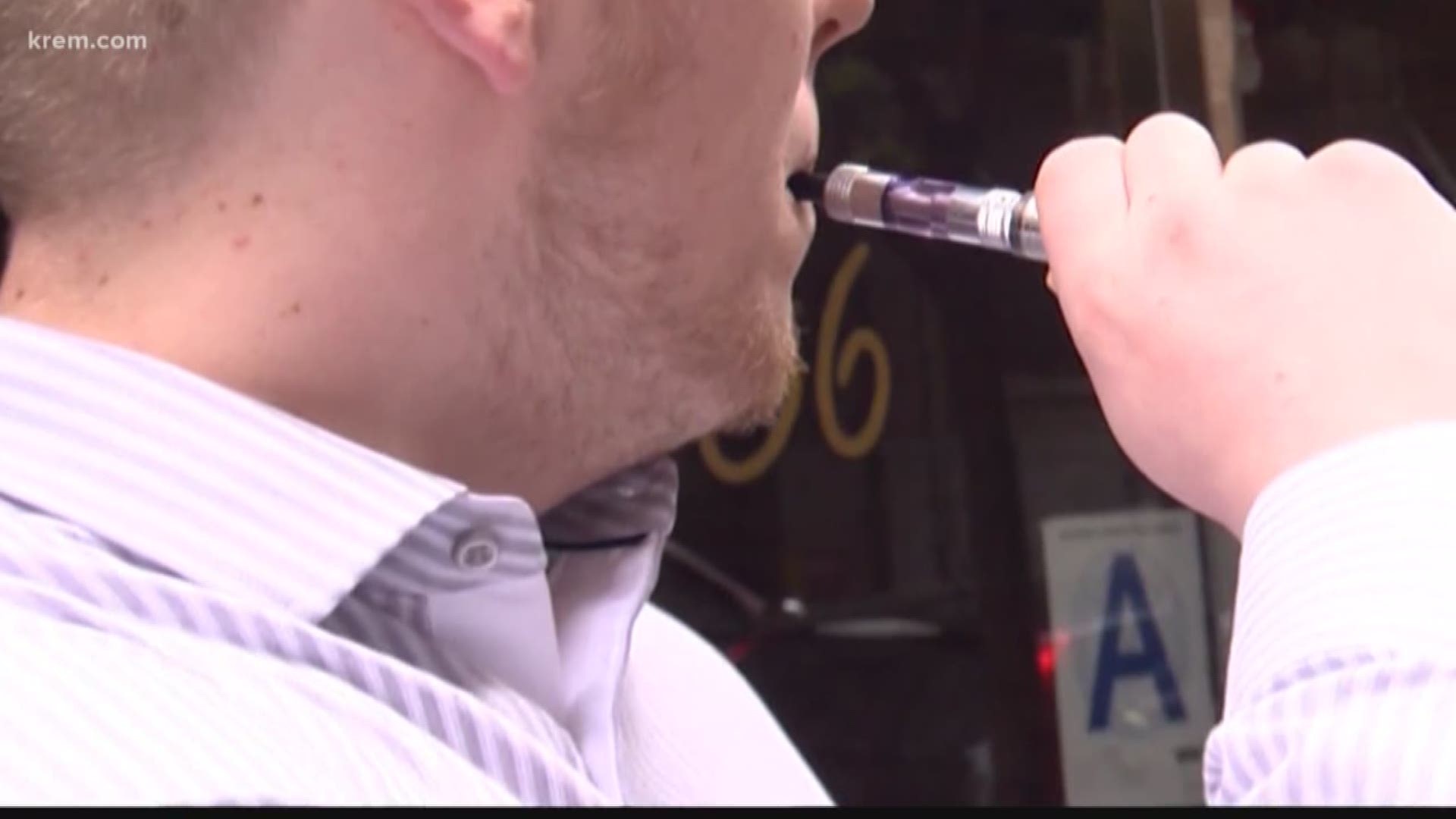SPOKANE, Wash. — With children back in school in both Idaho and Washington, parents and teachers should be on the lookout for an increased number of children vaping.
The small, rectangular shaped devices are filled with vaporized, candy-flavored nicotine. The use of e-cigarettes has been popular among teenagers nationwide for several years.
Matthew Myers, the President of the Campaign for Tabaco Free Kids, said over three million children are using vapes, and they are concerned that number will increase when students return to school.
Teenagers will have more time away from parents and will be back in an environment where peer pressure is more prevalent. That’s why experts are asking parents to talk to their children about vaping.
“It [is] extremely addictive. And kids can’t really perceive the harm in it, because it smells and tastes so good,” Dori Fuhrman, co-founder of Parents Against Vaping E-Cigarettes, said.
Which makes it easy for kids to become and stay addicted. The consequences of vaping are adverse effects on the adolescent brain.
Fuhrman said vaping at a young age builds pathways in the brain that can lead to further addiction later in life.
Another concern experts have is kids spreading COVID-19 by sharing vapes. But knowing a child is vaping might not be easy.
Here is a list of changes to look out for in a child that might point to the use of e-cigarettes:
- Changes in behavior
- Leaving the room more often
- Mood changes
- Violent outbursts
- Anxiety or depression
- Extreme thirst
- Trouble sleeping
Experts ask parents to talk to their children if these signs arise.
“It’s not a one-time conversation. You’ll get the eye roll, you’ll get the shoulder shrug. It might take three or four times before your child will open up,” Fuhrman said.
Once they do open up, there are resources on quitting available at SmokeFree.gov or from a child’s pediatrician.


